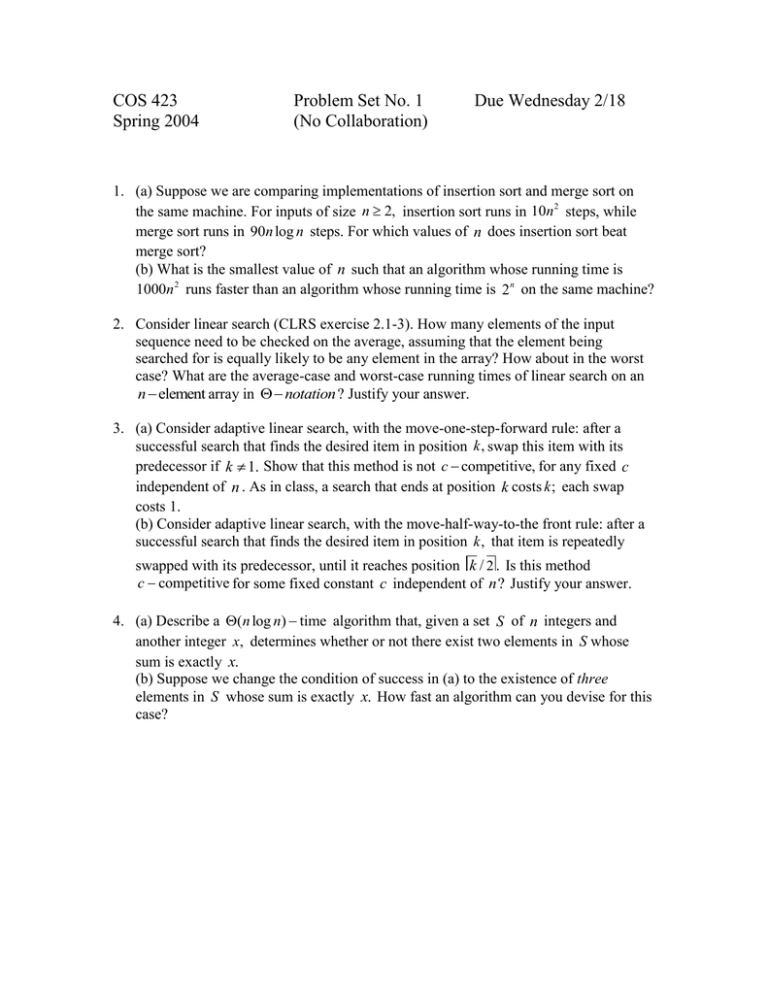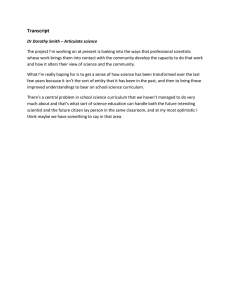COS 423 Problem Set No. 1 Due Wednesday 2/18
advertisement

COS 423 Spring 2004 Problem Set No. 1 (No Collaboration) Due Wednesday 2/18 1. (a) Suppose we are comparing implementations of insertion sort and merge sort on the same machine. For inputs of size n 2, insertion sort runs in 10n 2 steps, while merge sort runs in 90n log n steps. For which values of n does insertion sort beat merge sort? (b) What is the smallest value of n such that an algorithm whose running time is 1000n 2 runs faster than an algorithm whose running time is 2 n on the same machine? 2. Consider linear search (CLRS exercise 2.1-3). How many elements of the input sequence need to be checked on the average, assuming that the element being searched for is equally likely to be any element in the array? How about in the worst case? What are the average-case and worst-case running times of linear search on an n element array in notation ? Justify your answer. 3. (a) Consider adaptive linear search, with the move-one-step-forward rule: after a successful search that finds the desired item in position k , swap this item with its predecessor if k 1. Show that this method is not c competitive, for any fixed c independent of n . As in class, a search that ends at position k costs k ; each swap costs 1. (b) Consider adaptive linear search, with the move-half-way-to-the front rule: after a successful search that finds the desired item in position k , that item is repeatedly swapped with its predecessor, until it reaches position k / 2 . Is this method c competitive for some fixed constant c independent of n ? Justify your answer. 4. (a) Describe a (n log n) time algorithm that, given a set S of n integers and another integer x, determines whether or not there exist two elements in S whose sum is exactly x. (b) Suppose we change the condition of success in (a) to the existence of three elements in S whose sum is exactly x. How fast an algorithm can you devise for this case?
